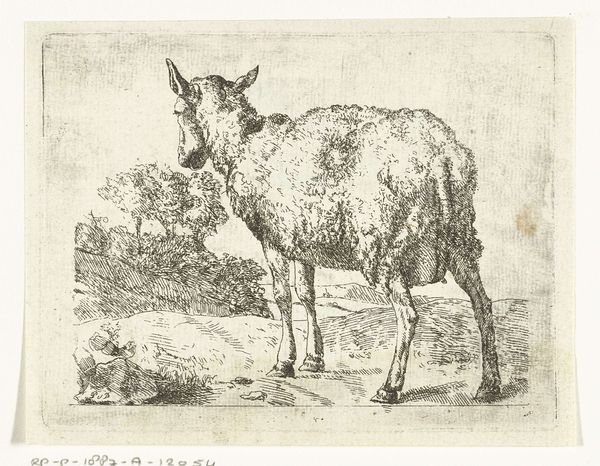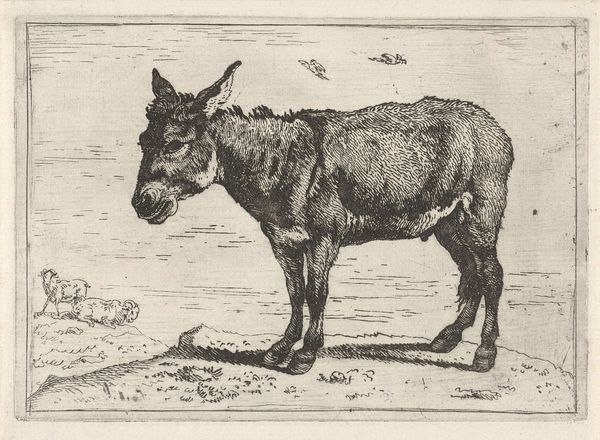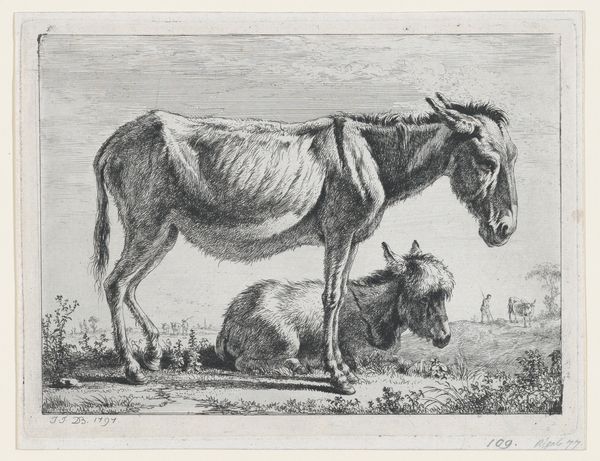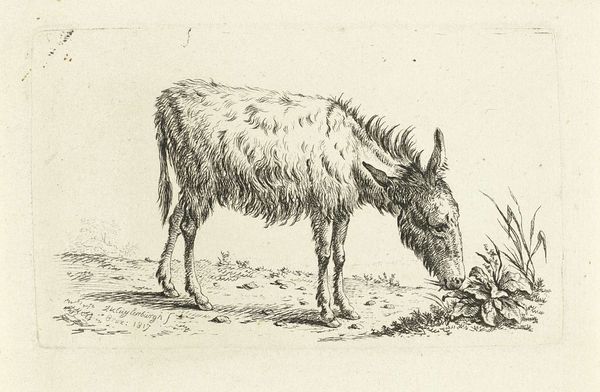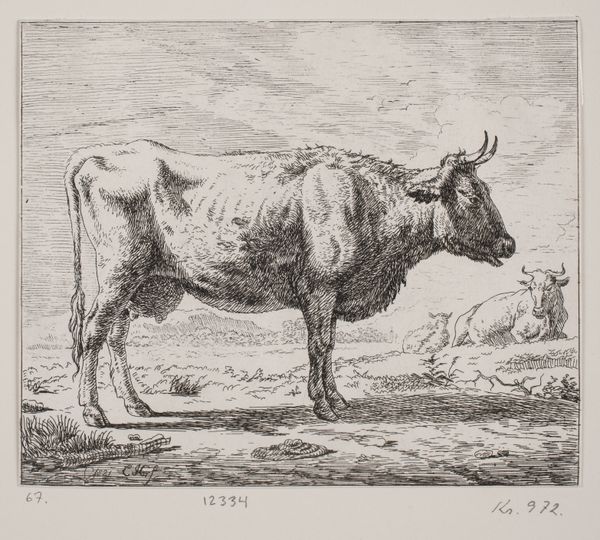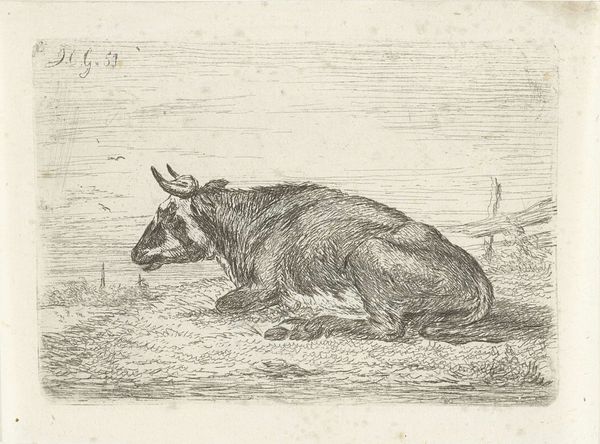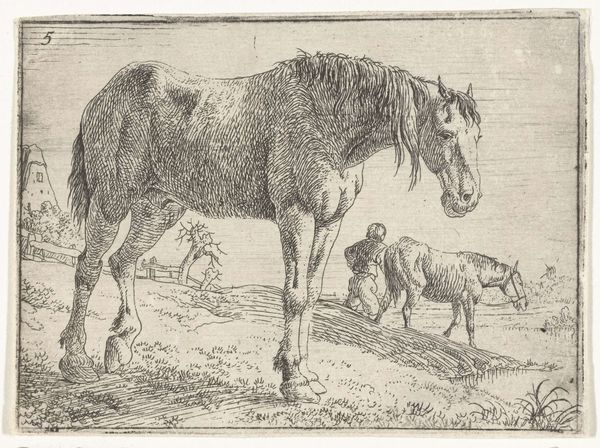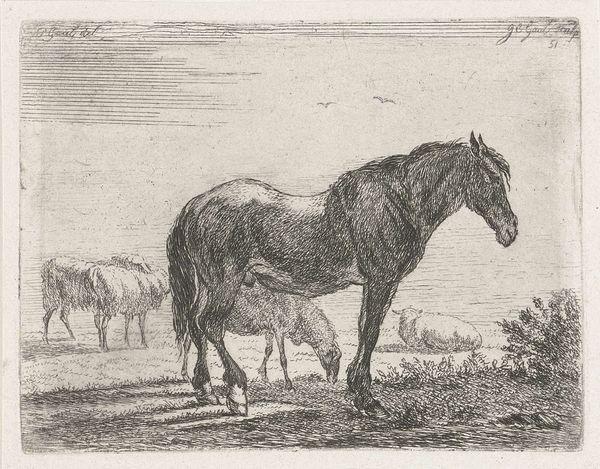
drawing, ink
#
drawing
#
landscape
#
ink
#
genre-painting
#
realism
Dimensions: height 113 mm, width 180 mm
Copyright: Rijks Museum: Open Domain
Frédéric Théodore Faber created this etching of a grazing donkey some time before his death in 1844. The composition immediately draws your eye to the donkey, centrally placed and occupying most of the frame. The linear quality of the etching, with its dense network of fine lines, gives the animal's coat a rich, textured appearance. Faber uses stark contrasts between light and shadow, particularly along the donkey’s back and ribs, which emphasizes the animal’s lean physique. The use of line to render texture and form suggests a certain structural understanding, creating a system of signs to depict the subject. The surrounding landscape is minimal, focusing our attention on the solitary figure of the donkey. This formal choice creates an interesting interplay between the particular—the donkey—and the general—the suggestion of a wider world beyond the frame. The linear execution and the formal arrangement of the image draw attention to the constructed nature of representation itself. How do such elements challenge fixed meanings and engage with new ways of thinking about representation?
Comments
No comments
Be the first to comment and join the conversation on the ultimate creative platform.

